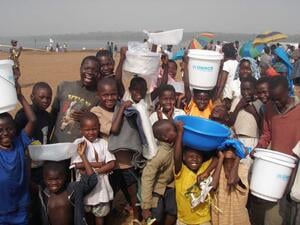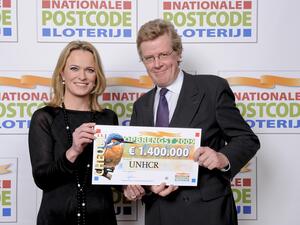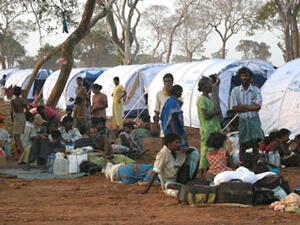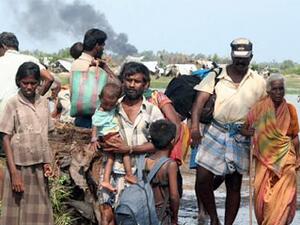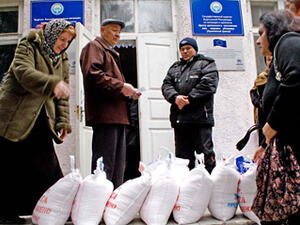Feature: Botswana camp captures history of southern Africa
Feature: Botswana camp captures history of southern Africa

Looking to the future, refugee children at Dukwi camp's day care centre can build on the camp's rich legacy.
DUKWI CAMP, Botswana (UNHCR) - At first glance, Dukwi looks like your usual African refugee camp, with children attending school, adults working in a weaving and tailoring project, neighbours chatting and babies playing happily in the mud.
But probe deeper into Botswana's only refugee camp and you'll find that like no other place in the region, it captures the recent history of southern Africa in a nutshell.
Located in the plains of eastern Botswana, two hours' drive from the provincial capital of Francistown, Dukwi camp was established by the Lutheran World Federation in 1978 to cope with a massive influx of refugees from what was then known as Rhodesia (now Zimbabwe). At its peak, the camp hosted more than 45,000 people, mostly fleeing oppression and racism in Zimbabwe and apartheid South Africa. There were also refugees from Namibia as well as Angola, the scene of Africa's longest and bloodiest civil conflict after the Portuguese left in 1975.
Many leading freedom fighters found protection in Dukwi's modest huts and tents when the situation got too dangerous for them at home. They discussed and planned future strategies, thus shaping the new face of a liberated southern Africa. Some of them have gone on to become today's prominent African leaders, including Barry Gilder, Director-General at South Africa's Ministry of Home Affairs, in charge of refugee issues.
But in Dukwi camp's early years, Botswana constantly faced accusations of sheltering "terrorists" and "criminals" and providing them with an operational base. This sparsely populated and vulnerable country was surrounded by powerful and hostile neighbours, so the government in Gaborone had to walk a fine line between these military threats and its support for the freedom struggle of the African nations.
The government succeeded by strictly preserving the humanitarian and non-military character of Dukwi camp. Refugees were given shelter and humanitarian assistance, while military activities were strictly prohibited. Police watched activities in the camp closely and Dukwi was declared a closed area.
Even today, the camp is haunted by its past. Dukwi is still directly administered by the Office of the President, and refugees and asylum seekers still need written permission to leave the camp for work or studies outside. Even recognised refugees are restricted in their movements.
The flow of refugees from southern Africa stopped when Zimbabwe achieved independence in 1980, followed by Namibia in 1990. In 1994, the apartheid era ended in South Africa, paving the way for democracy. Since then, no South African has been compelled to seek refuge in Dukwi camp.
Today, the camp is still home to some 3,500 people, the largest groups being 1,200 Namibians from the Caprivi Strip and 1,200 refugees from Angola. The rest come from elsewhere in Africa - Burundi, the Democratic Republic of the Congo, Rwanda, Somalia, Sudan, Uganda, with a few cases from Kenya and Tanzania.
More than 1,000 Namibians have already returned to the Caprivi Strip under a tripartite repatriation agreement between the governments of Botswana, Namibia, and the UN refugee agency. In addition, most of the remaining Angolans are expected to leave Dukwi for home this year. Their departure will help close a dramatic chapter in African history - the struggle for independence, freedom and peace in southern Africa.
By Melita H. Sunjic
UNHCR Regional Office in South Africa


